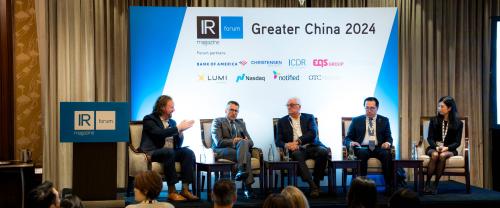Plus: investors keen on intellectual capital; and Middle East companies struggle with technology
Pictures of women
Women are under-represented in Canadian annual report photographs and usually depicted as less powerful than men in mixed-gender images, according to a recent content analysis.
Sampling the reports of all companies in the TSX 100 Index, researchers found women tend to be portrayed as younger, are more often pictured smiling, and are less likely to appear in professional dress or be portrayed as either executives or skilled employees.
‘Corporations looking to maximize the benefits of diversity should carefully consider the messages conveyed in their annual reports,’ says study co-author Merridee Bujaki, associate professor of accounting at the University of Ottawa, whose study found a strong positive link between return on equity and the frequency of female subjects in the photographs that appear in annual reports.
Accounting for knowledge
Investors increasingly crave information about intellectual capital to complement financial statements, and a recent empirical study confirms that providing this both increases company value and reduces the cost of finance.
Researchers analyzing the websites of 267 large non-financial listed companies from Belgium, Germany, the Netherlands and France found data that suggest companies that improve intellectual capital disclosures by 10 percent see a 0.4 percent decrease in the cost of equity capital.
‘For a market cap of $100 mn, this implies a reduction in the return expected by investors of $400,000,’ says study co-author Raf Orens, assistant professor of financial accounting at Lessius University College in Antwerp. ‘Better intellectual capital disclosure increases investors’ willingness to commit investment.’
Intellectual capital is defined as non-monetary, non-physical assets such as innovation, knowledge, R&D, employee training or customer satisfaction. Interestingly, the researchers found company value enhances with an increase in the reporting of information about customer value (such as loyalty) and internal capital (such as investments in R&D) but was unrelated to disclosure about human capital (training).
‘It may be that capital markets do not understand the relationship between human capital assets and a firm’s value creation process, have doubts about the reliability of the human capital information disclosed or are skeptical about the firm’s ownership of human capital resources,’ Oren says.
Digital desert
Internet financial reporting remains at an embryonic stage in much of the Middle East. Of 193 companies listed on stock markets in Oman and Bahrain, only 124 have websites and just 63 use them for financial reporting, say researchers at the German University in Cairo. A separate study of Jordanian industrial firms found only half have a website, with just 30 percent using it to disseminate financial information.
According to study author Talal Al-Hayale, assistant professor at the University of Windsor in Ontario, Canada, the top reason for the poor internet showing is weak regulator enforcement. ‘The rules are loose and local firms tend to use the internet to show only their positive side,’ he explains.










